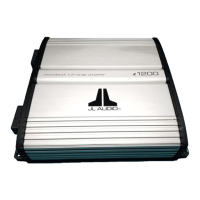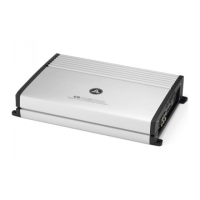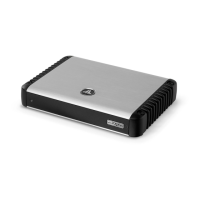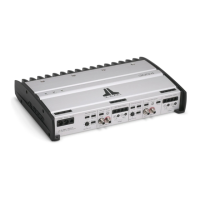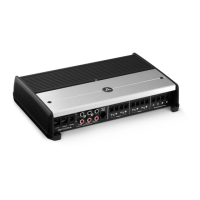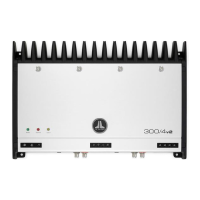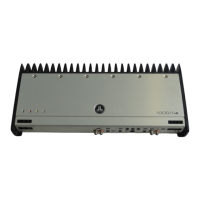If you wish to send four discrete channels into
the RD400/4, simply use all four inputs and set
the “Input Mode” switch in the “4 Ch.” position.
If you wish to use only two channels of input to
deliver signal to all four amplifier channels, set the
“Input Mode” switch to “2 Ch.” and use only the
inputs to channels 1 and 2. In this mode, channel
3 will operate with the channel 1 signal and
channel 4 will operate with the channel 2 signal.
INPUT VOLTAGE RANGE
A wide range of signal input voltages can be
accommodated by the RD400/4’s input section
(200mV – 8V). This wide range is split up
into two sub-ranges, accessible via the “Input
Voltage” switch:
“Low”: for preamp level signals
“High”: for speaker level signals
This switch affects all channels of the amplifier
equally. The “Low” position on the “Input
Voltage” switch selects an input sensitivity range
between 200mV and 2V. This means that the
“Input Sensitivity” rotary controls will operate
within that voltage window. If you are using
an aftermarket source unit, with conventional
preamp level outputs, this is the position you
should select.
The “High” position on the “Input Voltage”
switch selects an input sensitivity range between
800mV and 8V. This is useful for certain high-
output preamp level signals as well as speaker
level output from source units and small
amplifiers. To use speaker level sources, splice the
speaker output wires of the source unit or small
amplifier onto a pair of RCA cables or plugs,
or use the JL Audio ECS Speaker Wire to RCA
adaptor (XD-CLRAIC2-SW).
Line output converters are usually not needed
with the RD400/4. If you find that the output
cannot be reduced sufficiently with a direct
speaker level signal applied to the amplifier and
the “Input Voltage” switch in its “High” position,
you may use a line output converter or voltage
divider to reduce the signal level.
INPUT TYPE
Each pair of output channels includes an
“Input Type” switch to configure how the input
signals are fed to the outputs.
• Selecting “Stereo” will send signals from both
left and right inputs to their respective outputs.
• Selecting “Mono” will send the signal from
the left input (only) to both outputs, without
needing to use Y-adaptors. This is useful when
sending a single mono signal to both outputs
of a channel pair or to a bridged channel pair.
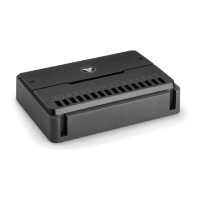
